An Introduction
The (very) early years
As a youngster, my life completely revolved around music. I’d played piano from the age of 6 (that’s when I started having lessons). As I worked my way through school I picked up a raft of other instruments.
At primary school the infamous descant recorder was added, along with a bit of guitar strumming.
By the time I was at secondary school, I’d be persuaded to take up the clarinet as my second instrument, although the rest of the recorder family popped by, a few more guitar incidents, a flute (tried), saxophone and a whole amount of orchestras and music groups.
Music really did take up all of my time when I wasn’t doing school work. The piano was my first music-love and to be honest, the only one. I never liked the clarinet, which fell by the wayside immediately after secondary school (although again a brief cameo appearance at uni where I confirmed my lack of love for it).
First synth – Casio CZ-101
When I was about age 11, my family acquired a small synthesiser, a Casio CZ-101. I’m actually not sure why we acquired it looking back. It was prior to my knowledge of such instruments and I don’t remember my parents doing much with it. But there you go.

At the time, I didn’t really comprehend what a synth was. I saw a keyboard and that was what made sense, even if its miniature keys were strange to a young pianist’s eyes. I certainly enjoyed the fact it made sounds that were different to what I was used to, but the whole concept of intricate sound design was completely lost on me.
You see my music upbringing was entirely classical. Despite my parents listening to the popular music of the day (I remember Queen LPs, ABBA and a recording of The Buggles’ ‘Video Killed the Radio Star’) my interest in pop music didn’t develop until my mid-teens. So I understood pianos, and orchestral instruments. But knew nothing of pop bands let alone what they played.
Discovery of pop-music
Roll on a couple of years and my interest in popular music had become much more focused. My first foray into the charts was the compilation album ‘Now that’s what I call music volume 10’ (although I do have memories of the original Now (1) being released, and a variety of stuff in the late 1970s on Top of the Pops. A time when we didn’t know what the presenters were up to.
With a chart snapshot of 1987 it was bang in the midst of the digital synth revolution, sort of extending from where the CZ-101 was born. We’re in a world where the analogue synths of the 70s were out of fashion, although as the 1990s started, musicians such as Erasure’s Vince Clarke started overtly using the analogues. As it happens in the chart world, synths were dead in the 1990s and it was only really the following decade when they returned, with the analogue sounds leading the charge.
It’s true to say that at the time I didn’t really understand the music in a technical way. I remember seeing Erasure in concert with Clarke sitting inside a sphere constructed of the analogue synths, but I still didn’t know enough to make any sense of it. In the meantime, I could listen and then play back songs on the piano, and had no difficulty understanding the techniques about how the songs were structured.
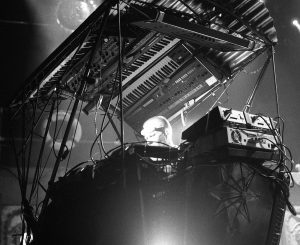
Vince Clarke synth sphere
Yet it was still from a classical viewpoint. I understood traditional instruments that made sounds by striking, plucking, vibrating or bowing. But synthetic sounds, not at all. And the whole analogue v/s digital divide was another step beyond that.
Electronic keyboards
Over the next year or two at secondary school I ended up playing with a whole host of small consumer-focused electronic keyboards from the stables of Casio and Yamaha. They had limited functionality – primative sounds that had the essence of whatever they were trying to mimic, but were a far cry from the sound quality of instruments used in pop world.
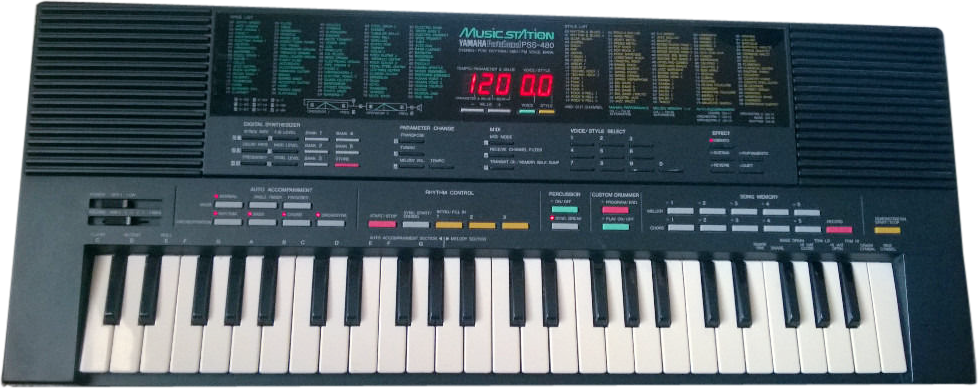
Yamaha PSS-480 – one keyboard I remember owning!
But they were fun and I made a fair share of noise with them. On occasions I may have even performed live. Although the reality was that when I did perform music, it was almost always either piano or on clarinet in an orchestra.
Atari ST Notator – a game-changer
At the time when I was studying for my GCSEs (including 2 different music exams) my mother had started to work at the school in the music department. Although she didn’t teach me in the school, I’d had home music tuition from the age of 6, so the idea of a parent being a teacher wasn’t alien to me (my father did actually teach me chemistry at school). And you wonder why I’m a clinically-diagnosed perfectionist!
The school music department had, somewhere along the way, had some money to purchase a ‘music computer’, but with no budget to send the staff on a course to learn to use it, said machine came home over the summer holidays for my mother to learn how to use it.

Back in those days, computers were not as available as they are now. I had a ZX Spectrum which essentially provided arcade and platform games, but it didn’t have the hardware on board to do anything serious like be a music computer.
I’d had a brief glimpse of something similar shortly before. I can’t remember what the system was, but it had a demo of Bronski Beat’s ‘Smalltown Boy’. I didn’t know the song at that time (still into my classical stuff) but I was blown away by a machine generating synthetic sounds which had been pre-programmed. It was true science-fiction of music to me.
So the arrival of an Atari ST with the Notator software was certainly a big interest. I’m not sure if it was by accident or design that it ended up being set up on my desk at home, but coupled with a Roland D10 synthesizer, I don’t think there were many hours that summer when I was too far from the machine.
The Roland D10 was exciting to me because it had full sized keys which had some level of touch-sensitivity. Nothing like what I was used to on the piano, but it allieviated the frustration of the plastic and un-sensitive mini-keys on the Casio. It was a keyboard that I could actually play. And it had lots of pre-set sounds which, at the time, sounded very good representations of the instruments around me. Plus a few weird noises to boot. Although whilst it was a synthesizer, just like with the Casio, I had no idea about sound design.
I suspect it was a factor of youth, but I taught myself how to use the music computer very quickly. Unlike much of the modern software, it was score-based, so reading and writing music meant I could input the notes with the Roland with ease and speed.
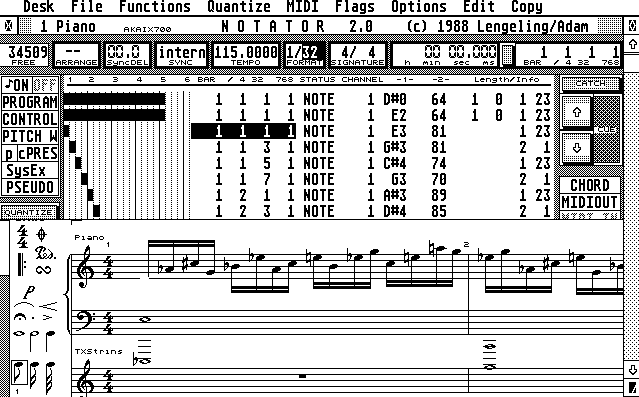
Notator
I think I must have just worked out what MIDI did in practice as I remember explaining it to a bewildered music department who didn’t know anything about that! I realised that the music computer could send out up to 16 lines of music simultaneously to the Roland, all utilising different sounds and fathomed out a process for building up quite complicated pieces of music. Some were covers of the electronic stuff I was listening to (think Pet Shop Boys, Jean-Michel Jarre, Vangelis).
However, as part of my GCSE practical music I had to write some original stuff. And whilst there was some recorder trio piece which has thankfully been lost in time, I was using the music computer to write some compositions that were very much electronic. Something which I took in my stride, but was a surprise to all around me.
My first true stab at programming
Exams out of the way I threw myself into seeing what I could do with this magical bit of kit. It was a very creative period in my life and I seemed to be writing music regularly. Something that really continued until I went to university when I had a period of writer’s block which kiboshed the whole thing.
I recorded lots of different things including half a dozen or so original compositions which ultimately became an album known as ‘Songs from the Border’ – an obscure title poking towards some of the mental health issues which were creeping into my life during my teens.
And you can listen to the 5 original tracks from the 1989-1991 period here on reverbnation.com
The other two tracks which made up the project were recorded separately. ‘Prelude’ was a live piece played on a digital piano in the music house at college (next to the gorgeous Steinway Grand!). Classique was the only piece recorded entirely on my Tascam 4-track recorder using the E20 and CZ-101 as instruments. No click track, a few timing issues but on balance not a bad effort.
And I did actually play live once!
I was involved in the local theatre and we had a ‘music night’. Armed with the D10 and a speaker, I performed 3 tracks to backing tracks which I was running from my cassette player, which was also being pumped through the amp.
Actually I remember little about the show other than me watching in horror as the D10 wobbled around on its stand whilst one of the other bands were leaping around the stage playing tracks from ‘The Commitments’. Oh and that their bassist had a lovely white bass guitar which he managed to bleed all across after he caught his finger on a string…….!
If there were any photos taken, I wasn’t aware of them. But think me, keyboard, and 1980s glasses and hair and you’ll get the idea.
Darn-you magnetic-disc technology!
Although I still have the physical floppy disk that I saved all the midi files to, the disk became corrupted at some point in the past. So all the computer work was lost and only the audio files which I’d recorded on a 4-track tape machine, remained. I thankfully mixed down the 4 track recordings as that machine bit the dust at some point. And also thankfully transferred the audio files onto digital media so at least they were preserved.
Although I did poke around after university with PC-based software, I didn’t really get into it again, and struggled to make sense of how the more modern software worked. All music pretty much ceased at university anyway, save for playing a wild selection of instruments in various bands (bass guitar accompanying 3 didgeridoos almost certainly being the most obscure). Even my classical playing stopped. I think in part because to play at the standard I could required a lot more practice than I was able/willing/prepared to give and the whole thing got a bit frustrating.
30ish years go by, just like that!
It was whilst flicking through on YouTube one bored evening in 2018 where I stumbled upon a channel called ‘The Sound Test Room’.
The presenter, Doug, provides loads of videos testing out a wide array of software synths and workstation software (DAWs) all running on an iPad. And whilst some of the software was paid for, some was freely available, or at least inexpensive to purchase.
I’d highly recommend Doug’s channel as he’s a wealth of knowledge about a lot of different iOS music making software and regularly posts videos trying out different apps.
That flickering light of music curiousity had finally been rekindled.
It was enough to get me going. I downloaded a couple of synthesizers and started playing with the sound design. Trying to understand what the vast array of acronyms meant in real terms. Although anything inside an app is software, these apps were mimicking real physical devices. Where voltages were applied to cause an oscillator to generate an audible waveform that could be manipulated in a plethora of different ways.
But that wasn’t all that had changed.
I still think of music creation and production in the way that I’ve always done it. A way that draws from the classical instrument world rather than purely a manipulation of sounds. And of course, many of the Digital Audio Workstations (DAWs) – the software that is what Notator was an early version of – cater more for that audience, rather than one that takes comfort in being able to see a score of musical notation.
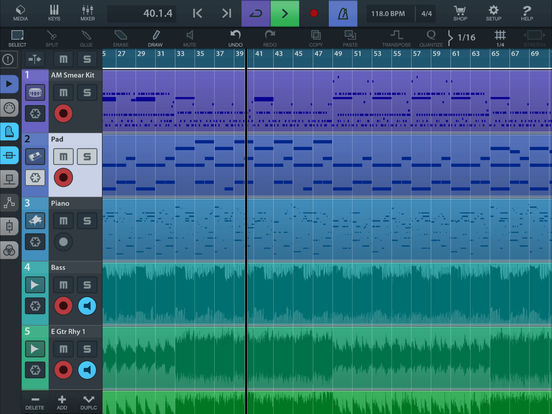
CUbasis 2 on iPad
New shoes old brain
That said, the process I used before must still be valid. At least it would be if I could remember how I did it.
What I have discovered to date is that the teenage version of me was a lot quicker at working things out. I have spent many an hour recently staring blankly at the DAW having no inkling about how to begin a project. The younger me clearly had worked out a process which seemed to go from idea through to multi-tracked sequencing with minimal fuss.
There’s also a mixture of technological differences. On the one hand the DAW I’m using now (Cubasis 2.7) is designed for the current times, yet it lacks some functionality that Notator had 30 years ago. On the other hand, back in the 1980s/90s I was limited to the sounds I had in the Roland D10 (plus a few occasions where the CZ-101 and my own E20 were included). I now have an iPad filled with synths and yet I struggle more now to find the sound I’m after! Just how many synths should a musician own……..?!
So what now?
At the outset it’s my intention to revisit some of the music I programmed the first time. Each piece was created with the processes I had and so my theory runs that I should be able to do it again. So that includes my own original stuff alongside some of the pop music that I was covering back then.
What I thought would be interesting (maybe just to me!) was to write about each piece as it is reconstructed. It’s going to be a long process even though there weren’t that many compositions created. Just trying to work out how to do it is a challenge. And then there’s the practicality of actually doing it. And probably hating the result until it’s gone through a few revisions.
My hope is that having re-learned “the process” I will then be able to apply it and create some new stuff. But that’s a long way off at this time.
But it should be a fun journey.
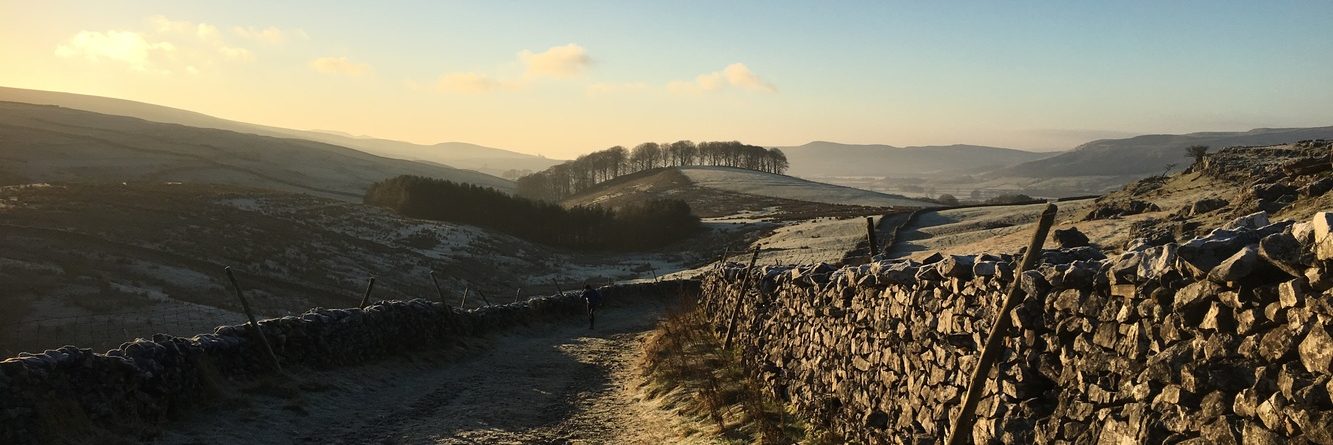
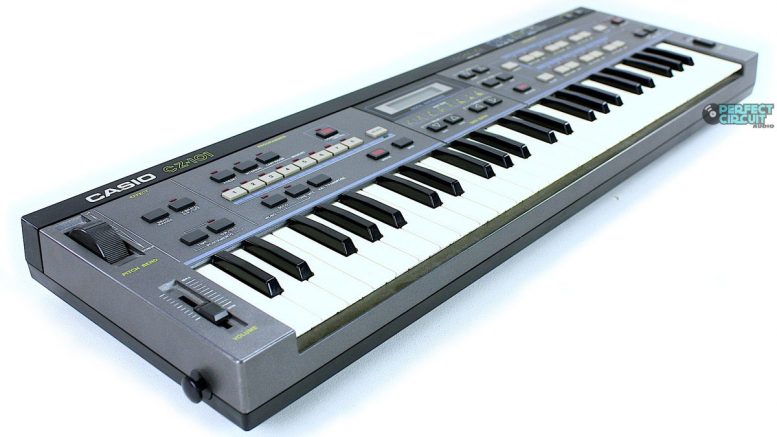
Be the first to comment on "Adventures in music"